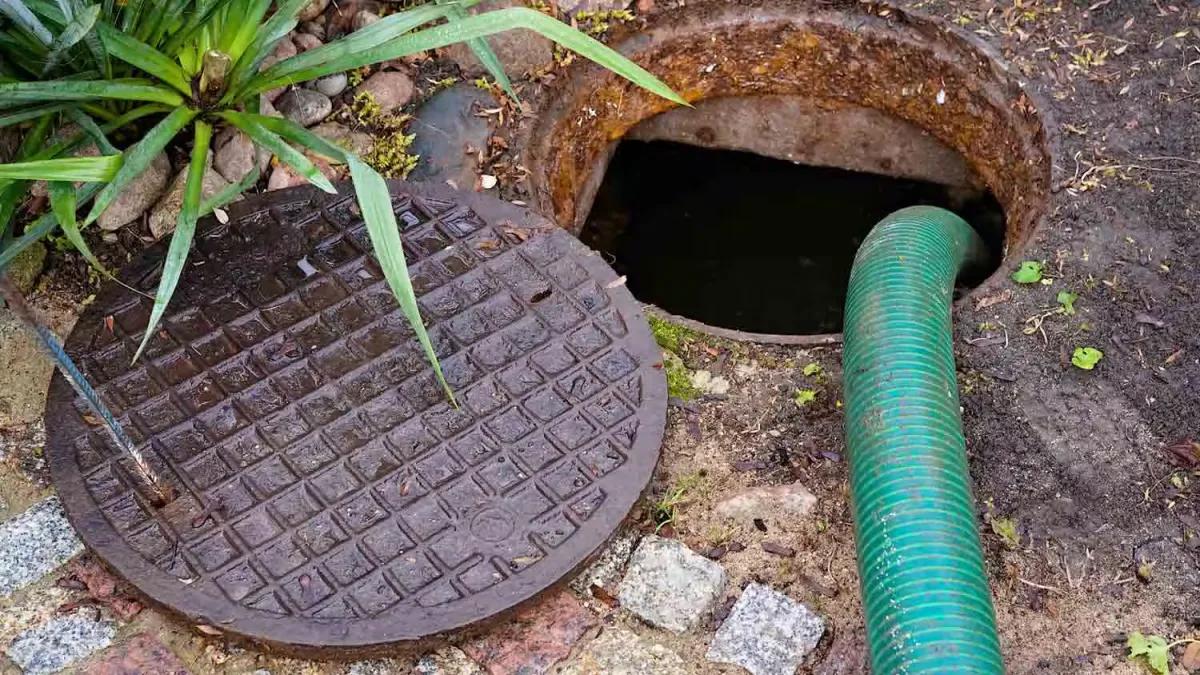Septic Clean Out: Your Complete Guide to Maintaining a Healthy Septic System

Is your septic system showing warning signs like slow drains or unpleasant odors? You might be wondering about a septic clean out. Don't worry - we're here to guide you through everything you need to know about maintaining your septic system properly.
Having a properly maintained septic system is crucial for your home's health and your family's safety. Let's dive into what a septic clean out involves and how you can ensure it's done right.
What is a Septic Clean Out?
A septic clean out is the process of removing accumulated solids, sludge, and scum from your septic tank. According to the Environmental Protection Agency (EPA), this essential maintenance task helps prevent system failures and expensive repairs.
Understanding Your Tank's Layers
Your septic tank naturally separates waste into three layers:
Top Layer (Scum): Oils, grease, and floating materials
Middle Layer (Effluent): Relatively clear liquid
Bottom Layer (Sludge): Heavy solids and waste material
Regular clean outs remove these layers before they cause problems. The National Environmental Services Center recommends cleaning when sludge and scum layers combined reach 30% of your tank's volume.
Why Regular Clean Outs Matter
Your septic system needs regular attention to function properly. Here's why:
Prevents costly backups and repairs
Protects your family's health
Safeguards the environment
Extends your system's lifespan
Maintains property value
Signs You Need a Septic Clean Out
Watch for these warning signals:
Slow-draining sinks or toilets
Gurgling sounds in pipes
Bad odors around drain field
Sewage backup
Unusually green grass over septic system
Water pooling in yard
How Much Does It Cost to Clean Out a Septic Tank?
According to HomeAdvisor, septic tank cleaning costs typically range from:
Standard cleaning: $300-$600
Deep cleaning: $600-$2,000
Emergency service: Additional $100-$300
Factors affecting cost include:
Tank size
Location
Accessibility
Service type needed
Local rates
Step-by-Step Guide to Septic Maintenance
Schedule Regular Inspections
Contact a licensed inspector
Schedule yearly inspections
Keep detailed maintenance records
Document any repairs or issues
Take photos of system components
Save all service receipts
Create a Maintenance Calendar
Mark inspection dates
Schedule pump-outs every 3-5 years
Set reminders for routine checks
Track water usage patterns
Note any system changes
Record weather-related impacts
Monitor Usage
Track water consumption
Use water-efficient fixtures
Space out heavy water usage
Protect Your System
Never flush non-biodegradable items
Avoid harsh chemicals
Direct rainwater away from drain field
Professional Clean Out Process
Here's what happens during a professional septic clean out:
Locate access ports
Remove tank cover
Inspect tank condition
Pump out contents
Clean tank walls
Inspect baffles and outlets
Replace cover
Document service
DIY Maintenance Tips
While the actual clean out requires professionals, you can take many steps to maintain your system's health:
Daily Practices
Monitor water usage
Use septic-safe products
Spread out laundry loads
Fix leaky faucets promptly
Avoid harsh cleaning chemicals
Weekly Checks
Inspect for wet spots in yard
Listen for unusual sounds
Check for slow drains
Monitor toilet flushing
Watch for unusual odors
Monthly Tasks
Clean water filters
Inspect access ports
Check drain field condition
Record water usage
Update maintenance log
Seasonal Maintenance
Protect from freezing
Maintain proper drainage
Inspect vent pipes
Check for root intrusion
Monitor ground cover
Common Mistakes to Avoid
Don't make these costly errors:
Flushing harmful items
Using excessive water
Ignoring warning signs
Waiting too long between cleanings
Using chemical drain cleaners
Understanding Your Septic System
A properly functioning septic system is crucial for your home's waste management. Let's explore each component:
Main Components
Septic Tank: Primary container where waste separation occurs
Distribution Box: Directs water flow to drain field
Drain Field: Final filtration area
Clean Out Ports: Access points for maintenance
Baffles: Control waste flow and prevent clogs
How Your System Works
Waste enters the tank
Solids settle to bottom
Oils rise to top
Clear liquid moves to middle
Effluent flows to drain field
Soil naturally filters water
System Capacity
Your system's size depends on:
House size
Number of occupants
Soil conditions
Local regulations
Water usage patterns
When to Call a Professional
Contact a pro immediately if you notice:
Sewage backups
Strong odors
Flooding
System alarms
Slow drains throughout house
Choosing a Septic Service Provider
Look for these qualifications:
Licensed and insured
Experienced technicians
Good reviews
Fair pricing
Written estimates
Warranty options
Emergency Situations
If you have an emergency:
Stop water usage
Call a professional immediately
Document the problem
Take photos for insurance
Keep children and pets away
Long-term Care Tips
For optimal system performance:
Schedule regular maintenance
Keep detailed records
Monitor water usage
Use septic-safe products
Protect your drain field
Understanding Costs and Savings
Regular maintenance through septic clean out saves money by:
Preventing major repairs
Extending system life
Avoiding emergency services
Protecting property value
Maintaining efficiency
Conclusion
A proper septic clean out is essential for maintaining your home's waste management system. By following these guidelines and maintaining regular cleanings, you'll protect your investment and ensure your system runs smoothly for years to come.
Want more home maintenance tips? Check out our other helpful guides for keeping your home systems running efficiently!

© 2025 | All Rights Reserved | Privacy Policy
